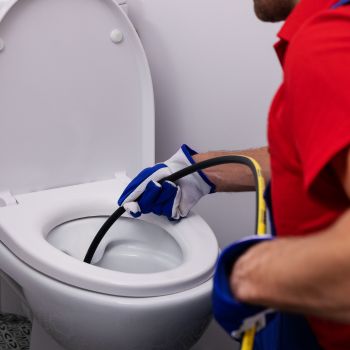Reasons Your Toilet Keeps Running
 When you flush the toilet, you notice it hasn’t stopped running after a few minutes. A constantly running toilet not only creates background noise, but wastes a lot of water. However, this issue is not always immediately apparent.
When you flush the toilet, you notice it hasn’t stopped running after a few minutes. A constantly running toilet not only creates background noise, but wastes a lot of water. However, this issue is not always immediately apparent.
Although jiggling the handle may help, certain components of your toilet may need to be adjusted or a leak may be disrupting the system. As such, you’ll need to contact a professional as soon as possible to address the issue.
In the meantime, understand why your toilet continues to run.
Float Height Needs to Be Adjusted
The location of the float in your toilet’s cistern or “tank” can signal to the system there’s not enough water present. Ordinarily, the water washes out of the tank every time you flush, causing the float to lower.
When the tank refills, the float reaches the ideal fill level, which then signals to the toilet to stop sending water to the tank. Typically, the level position is above the overflow tube and below the fill valve.
This signal gets muddled if water continues to leak from the tank – an issue that may go back to the overflow tube – or if the tank has too much water in it. The float may also be cracked or damaged, altering its position in the tank.
The issue might not even be with the float itself but with the switch that sends the signal to turn off the water. These switches can time out or temporarily stop functioning, causing more water to flow into the bowl. A toilet that continues to flush and refill may indicate a switch that repeatedly turns off or loses signal.
Old or Damaged Flapper
The flapper, or rubber stopper located at the bottom of the tank to control the flow of water into the toilet bowl, may be damaged or leaking. When working as it should, the flapper lifts up when you flush and once lowered, it creates a seal that prevents additional water from flowing into the bowl.
Yet over time, the rubber starts to wear and compromises the seal created, allowing water from the tank to flow into the bowl.
A Damaged Chain
The flapper itself may still be sound, but the chain attached could be the wrong size. This often happens with DIY jobs and causes the chain to get tangled or caught below or around the flapper, compromising the seal. Chains that are too short can also unplug the flapper without warning.
Refill Tube Issues
An improperly sized refill tube may affect how water flows into the bowl. A tube that’s too long or not positioned in line with the overflow tube causes this process to occur repeatedly or may divert water from the fill valve into the tank. As a result of poor DIY work, the refill tube may need to be shortened to reduce the suction effect being created.
Broken Toilet Handle
Similar to a damaged float, a broken or damaged toilet handle can prevent water from reaching the top of the tank. Because the float does not sit at the proper height, your toilet remains in a constant state of flushing until the handle and related parts are replaced and adjusted.
Valve Issues
Your toilet may continue to run in response to the following factors:
- A Leaky Fill Valve: Fill valves help control the amount of water flowing into the tank. A loose-fitting or leaky valve can cause water to flow back into the bowl and may signal the tank doesn’t have enough water.
- Clogged Fill Valve: A clogged fill valve can affect how well the toilet drains and prevents the tank from filling up. This can occur in response to waste accumulation in the system.
- Damaged Flush Valve: Related to a broken or damaged handle, a malfunctioning flush valve prevents the toilet from shutting off completely. The bowl never fills all the way and the toilet continues to drain.
Concerned about a toilet that won’t stop running? Have our experienced plumbers investigate the issue. To schedule service, contact MJ Fahy & Sons today.




